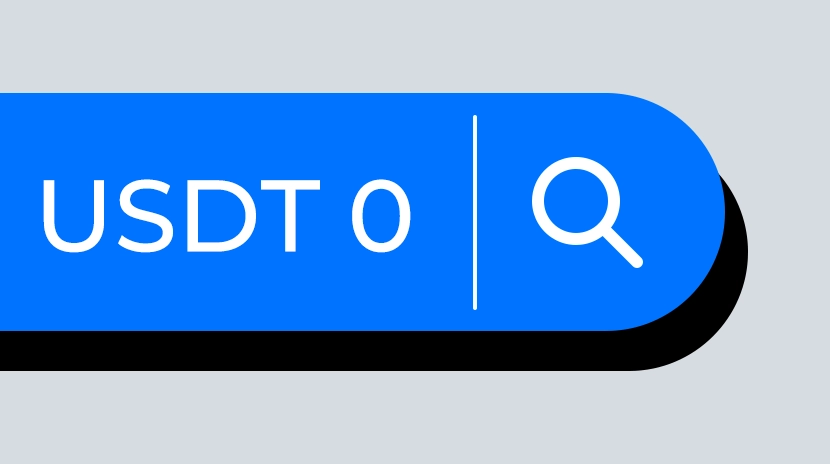TEDA's Golden Empire: The Ambition and Cracks of a "Borderless Central Bank"
Tether, issuer of USDT—the world’s largest stablecoin—is accumulating physical gold at a record pace.
According to Tether’s Q3 2025 report, its gold reserves have skyrocketed to $12.9 billion, compared to just $5.3 billion at the end of 2024. In the span of nine months, Tether’s net gold holdings grew by over $7.6 billion. Market analysts have observed that Tether has been adding more than a ton of gold to its reserves every week over the past year, outpacing the gold accumulation rate of most sovereign central banks.
In addition, Tether has begun acquiring controlling stakes in gold mines and recruiting top-tier global precious metals traders. These strategic moves suggest that Tether is building what resembles a “borderless central bank,” powered by U.S. Treasuries for profits and anchored by gold and Bitcoin as core assets. Yet, beneath this seemingly perfect commercial empire, is such a vision truly viable?
$12.9 Billion Gold Reserve Drives $4 Billion in Unrealized Gains
Tether’s financial performance in 2025 has been nothing short of extraordinary. In the first nine months, net profits surpassed $10 billion, propelling Tether’s valuation to $500 billion—on par with OPENAI.
This ten-figure profit stream showcases Tether’s “alchemy,” which consists mainly of two sources:
- Operating profit: Steady interest income from roughly $135 billion in U.S. Treasuries.
- Unrealized gains: Massive unrealized gains generated by gold and Bitcoin reserves during the 2025 bull market.
While Tether hasn’t disclosed a detailed profit breakdown, we can estimate its main contributors.
Returns from U.S. Treasuries likely total around $4 billion annually, given a 4% yield.
Gold has played an outsized role. At the start of 2025, gold traded at about $2,624 per ounce, surging to $3,859 by September 30—a 47% increase. Based on Tether’s end-2024 gold holdings of $5.3 billion, these “legacy holdings” alone generated approximately $2.5 billion in unrealized gains. Factoring in new gold purchases during 2025, Tether’s annual profit includes $3–4 billion from gold appreciation. Unrealized gains from Bitcoin are estimated at roughly $2 billion.
As a result, gold has become a pivotal part of Tether’s revenue model. Tether is not just leveraging gold for returns; it’s replicating sovereign wealth strategies by attempting to control the full gold supply chain—from mining to trading.
In June 2025, Tether Investments announced a 37.8% strategic stake in Elemental Altus Royalties Corp., a publicly listed Canadian gold royalty company, with rights to increase its stake to 51.8%—enabling majority control. Through this royalty model, Tether secures long-term shares of gold production without operational mining risk, ensuring long-term availability for its gold reserves.
In November, Tether recruited two global elite precious metals traders from HSBC. Vincent Domien, one of the hires, was HSBC’s Global Head of Metal Trading and serves as a current board member of the London Bullion Market Association (LBMA).
Furthermore, Tether Gold (XAUT)—a standalone tokenized gold product—now has a market cap exceeding $2.1 billion. Tether, in partnership with Singapore’s Antalpha, plans to raise at least $200 million for the Digital Asset Treasury (DAT) initiative. The fund aims to accumulate XAUT tokens and establish an “institutional-grade gold-backed lending platform.”
The “Treasury-Gold” Loop: Shaping a Borderless Central Bank
Through these strategic moves, Tether has engineered an exceptionally robust business model:
Dollar acquisition: By issuing USDT, Tether attracts nearly $180 billion in global capital.
Treasury investment: It allocates the vast majority of these funds to highly liquid, secure U.S. Treasuries.
Interest revenue: In the Fed’s high-rate environment, Tether earns billions in “risk-free” interest annually.
Gold purchases: Profits are partially reinvested in gold and gold industry assets, hedging against Treasury devaluation or rate cuts.
Overcollateralization: By stockpiling gold and Bitcoin, Tether strengthens its reserve ratio, enhances stablecoin market security, and increases brand value, paving the way for further stablecoin issuance.
Through this integrated strategy, Tether is no longer a mere crypto company. It now resembles a “shadow bank,” and has evolved into a non-sovereign central bank, holding more Treasuries and gold than many nations.
This cycle has made Tether one of the world’s most efficient profit-generators. The company is now expanding into AI, education, energy, agriculture, and other industries, broadening its commercial footprint. Most importantly, as the stablecoin sector surges, Tether’s “seigniorage power” will give it significant influence across more industries and regions.
Three Cracks in the Perfect Empire
Yet, beneath this perfection, new cycles are emerging. Tether’s “perfect logic” now faces three major threats: regulation, market volatility, and rising competition. Any one of these could jeopardize its “borderless central bank” ambitions.
Threat One: Regulatory Barriers
While gold reserves have delivered massive profits to Tether, they are also its greatest compliance risk. In July 2025, the U.S. enacted the GENIUS Act, requiring stablecoin issuers operating in the country to back their reserves 100% with “high-quality liquid assets”: U.S. dollar cash or short-term Treasuries.
This exposes Tether’s vulnerability. Per its Q3 report, Tether holds $181.2 billion in total reserves against $174.4 billion USDT issued. Of these, $12.9 billion in gold, $9.9 billion in Bitcoin, and other investments and loans are considered “non-compliant assets” under GENIUS Act standards.
J.P. Morgan’s 2025 analysis notes that Tether may be forced to liquidate all “non-compliant assets”—including Bitcoin and precious metals—if it wishes to operate legally in the U.S.
This scenario has already unfolded in Europe. Due to noncompliance with EU MiCA rules, nearly all major exchanges—including Coinbase and Crypto.com—delisted USDT from the European Economic Area (EEA) between late 2024 and March 2025.
As GENIUS Act enforcement ramps up over the next 18 months, all U.S.-regulated exchanges (such as Coinbase and Kraken) will likely follow suit. Although Tether claims it does not serve U.S. clients, a coordinated U.S. exchange ban would severely hit global liquidity, effectively forcing a withdrawal from the world’s largest regulated market.
Tether’s actions confirm the seriousness of these risks. In September 2025, Tether launched Tether America and appointed former White House advisor Bo Hines as CEO (see: 29-year-old Crypto Rising Star Bo Hines: From White House Crypto Liaison to Rapid Appointment as Head of Tether’s U.S. Stablecoin). The company plans to launch a new, fully compliant stablecoin called USAT in December, backed exclusively by Treasuries and tailored for the U.S. market. This move appears to create a “firewall,” sacrificing USDT’s U.S. future to protect its global gold and Bitcoin reserve strategy. Still, USAT is more a strategic hedge than a full-scale pivot.
Threat Two: Bear Market Risks
As discussed, Tether’s profits are driven by two main segments: Treasury returns and—more significantly—appreciation in gold and Bitcoin. Its outstanding 2025 results were fueled by surging gold and Bitcoin prices.
However, this profit model carries substantial risk. Should market conditions reverse in 2026, Tether’s profit growth could slow or even turn negative.
Major financial institutions forecast that the Federal Reserve will begin cutting rates in 2026. A 25 basis-point reduction could decrease Tether’s annual income by $32.5 million.
Meanwhile, gold and Bitcoin enjoyed a euphoric bull market in 2025, with continued optimism for 2026 amid rate-cut expectations. But markets are inherently unpredictable. If gold and Bitcoin enter a bear cycle (not necessarily together—the core of Tether’s hedging strategy), Tether’s gains from these assets could shrink dramatically, erasing profits in a new cycle.
Further, if the crypto market turns bearish, stablecoin issuance growth may stall or contract, directly impacting Tether’s bottom line.
Threat Three: Rising Competitors
Tightening regulations are reshaping the stablecoin market. The U.S. GENIUS Act and EU MiCA rules are paving the way for fully compliant stablecoins.
The biggest winner is Circle’s USDC. As the compliance frontrunner, USDC is favored by regulators. Circle’s Q3 2025 report shows USDC circulation reached $73.7 billion, up 108% year-over-year.
In comparison, Tether remains the dominant player but is losing momentum. September 2025 figures show USDT’s supply at $172 billion, with growth lagging USDC. According to the 2025 Global Stablecoin Industry Development Report by PANews, USDC could surpass USDT by 2030 if current trends persist. In short, Tether’s “gold strategy” is both its competitive moat and a potential vulnerability. Objectively, its risk-hedging model remains the most impressive design in the crypto space. Industry leaders like J.P. Morgan and Goldman Sachs believe the Fed’s rate-cutting cycle in 2026 may fuel new highs in gold and Bitcoin, not trigger a bear market. If this scenario plays out, Tether’s “gold strategy” could propel it to a new level.
Statement:
- This article is reprinted from [PANews], with copyright belonging to the original author [Frank, PANews]. For reprint objections, please contact the Gate Learn team; they will handle inquiries promptly according to established procedures.
- Disclaimer: The views and opinions expressed in this article are solely those of the author and do not constitute investment advice.
- Other language versions of this article are translated by the Gate Learn team. Unless Gate is explicitly mentioned, do not copy, distribute, or plagiarize translated articles.
Related Articles

In-depth Explanation of Yala: Building a Modular DeFi Yield Aggregator with $YU Stablecoin as a Medium

What is Stablecoin?

Top 15 Stablecoins

A Complete Overview of Stablecoin Yield Strategies

Stripe’s $1.1 Billion Acquisition of Bridge.xyz: The Strategic Reasoning Behind the Industry’s Biggest Deal.
